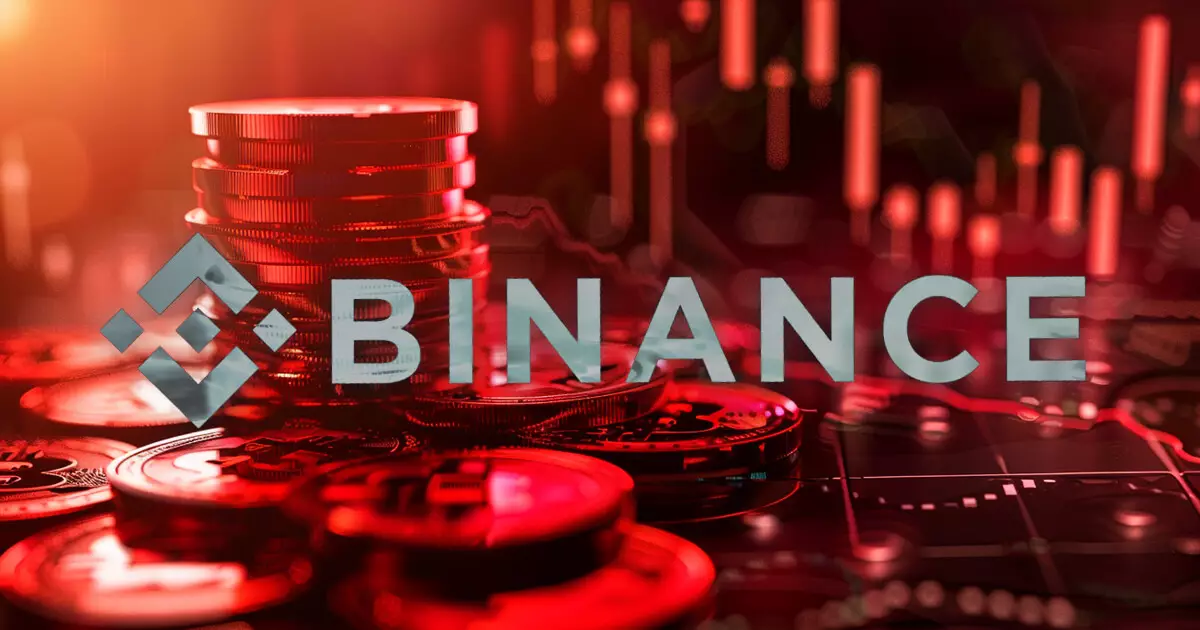In the ever-evolving world of cryptocurrency, volatility often leads to dramatic shifts in market dynamics. Recently, Binance, the preeminent cryptocurrency exchange globally by trading volume, has come under fire for its listing of two Solana-based memecoins: The AI Prophecy (ACT) and Peanut the Squirrel (PNUT). Following these listings on November 11, the market witnessed an astronomical rise in their market capitalizations, prompting inquiries regarding the ethical implications of such rapid growth, which many communities suspect could be indicative of a pump-and-dump scheme.
Both tokens saw significant price surges shortly after their introduction to Binance. ACT skyrocketed over 1,000%, ballooning its market cap to over $400 million, while PNUT, inspired by a beloved internet mascot, also experienced a robust increase of approximately 100%. Such phenomenal gains in a short time frame raise questions regarding the motives behind their rapid inclusion on Binance’s platform.
The sudden listings have garnered criticism from prominent figures within the crypto community. Leonidas, a co-founder of Ord.io, has spearheaded a petition aimed at addressing Binance’s listing practices. He asserts that the inclusion of low-market-cap memecoins such as ACT and PNUT not only promotes aggressive trading strategies but, more troublingly, risks enabling malicious market behavior that can exploit unsuspecting retail investors. Leonidas argues that the exchange’s tendency to list ‘dead’ memecoins—tokens lacking consistent trading activity—suggests a systemic strategy to extract value for insiders at the expense of everyday traders.
His assertions highlight a critical point: are these memecoins deliberately selected due to their appeal and financial capability to meet listing fees, primarily benefiting a small group of insiders? Such practices could create an uneven playing field where a select few profit disproportionately, leading to broader market manipulation.
In light of these concerns, Leonidas advocates for greater transparency from Binance regarding its listing criteria. He urges the exchange to disclose the specific terms associated with its listing fees and whether any fees are compensated with tokens—practices that could raise significant ethical dilemmas. Ensuring clarity around such financial dealings is crucial for maintaining the integrity of the cryptocurrency landscape. The call for transparency echoes a broader desire for regulatory oversight within a market often perceived as chaotic and unregulated.
Loopify, a pseudonymous crypto game studio founder, appears to share similar sentiments. He observes that Binance’s traditionally rigorous listing policies may be loosening in response to shifts in trader behavior, suggesting that new listings might be aimed at preventing users from migrating to decentralized exchanges. The implications of this shift are profound. If exchanges loosen standards to retain their user base, the resulting influx of questionable tokens poses risks not only to individual investors but to the market’s overall reputation.
Data on the memecoins listed by Binance in 2024 reveals a striking trend: a staggering 80% of these tokens experienced substantial price increases after their listings. Moreover, over half of these memecoins have been developed on the Solana blockchain, with significant participation from Ethereum, BNB Smart Chain, and the Base network. This raises a pivotal question regarding the criteria for listing: does Binance prioritize community support and token popularity over minimum market capitalization requirements, potentially allowing less viable projects to thrive briefly in a speculative bubble?
The consequential fallout of these trends may not just affect current investments but also provoke wider implications for market regulation. Investors may begin to exercise heightened caution, as the promise of quick profits from memecoins could be shadowed by the risks associated with speculative trading and market manipulation.
As the cryptocurrency market continues to evolve, the practices of major exchanges like Binance will undoubtedly come under increased scrutiny. The intersection of community dynamics, investor protection, and market integrity necessitates an ongoing dialogue regarding best practices in the crypto ecosystem. Ensuring fair practices and heightened transparency will ultimately serve to bolster investor confidence and promote a healthier trading environment for all participants in the cryptocurrency space. It is crucial for exchanges to listen to their communities and adapt in a manner that promotes sustainability over speculative excitement.

